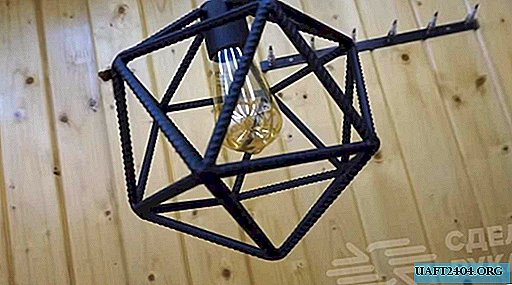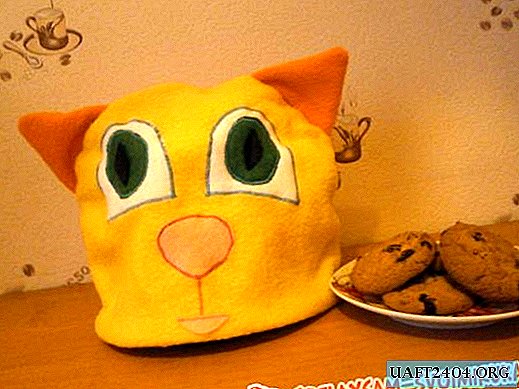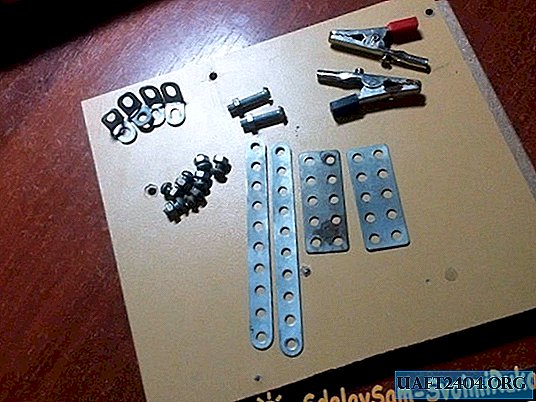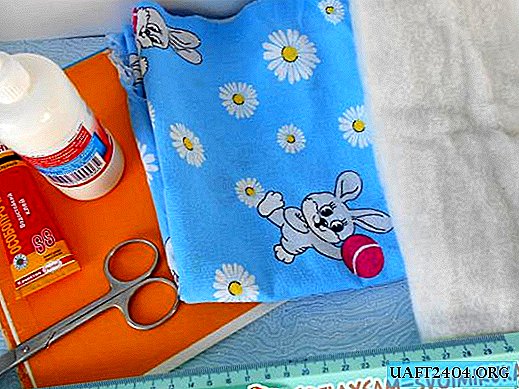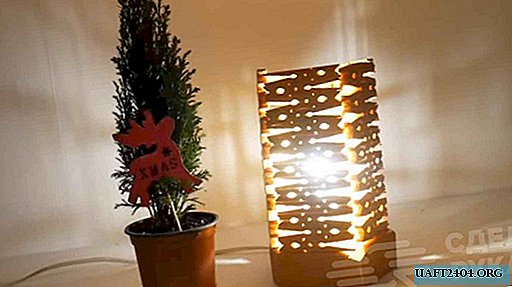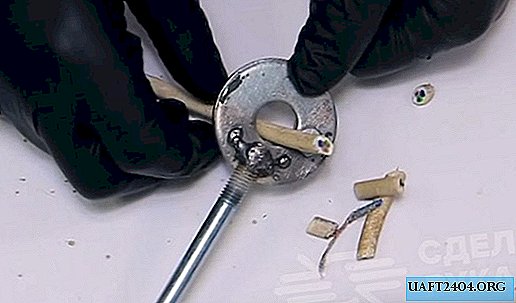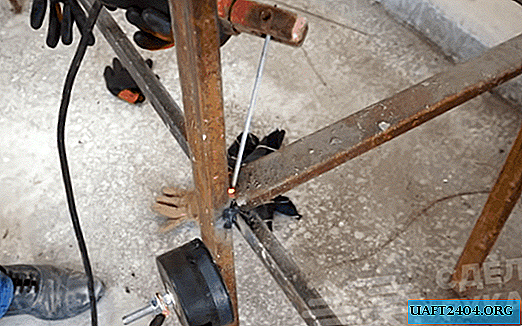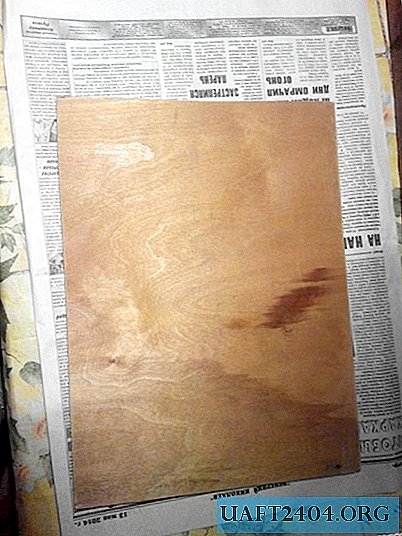Share
Pin
Tweet
Send
Share
Send
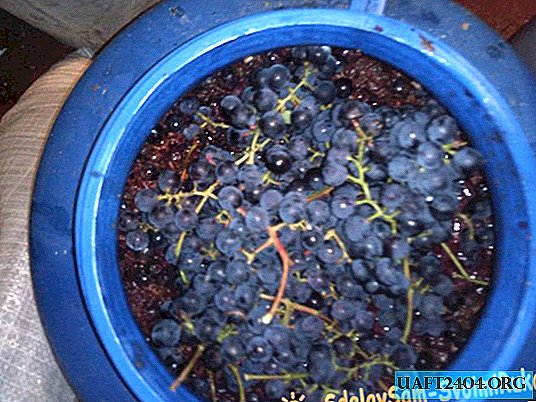
Then, the middle of summer turned out to be cold and rainy, and it seemed that a serious threat loomed over the harvest: the grapes did not grow, did not blush, it was clear that he felt bad in such conditions. But August corrected everything, the temperature again remained at 25 degrees Celsius and higher, the grapes came to life, grew, quickly turned red, gained sugar content, and by the beginning of September was almost ready for harvesting and processing.
Grapes for wine
The grape from which we will make wine is called "Isabella", it is red, with seeds inside. This variety is unpretentious in the process of growing, does not require shelter for the winter, is resistant to various grape infections and diseases, such as the mildew fungus. Taste is average, with purchased store-bought or southern Crimean varieties, of course, they cannot be compared, but if you manage to ripen, like this year, it’s still very tasty. This year, I ate it directly, I never remember this before, and I have been doing grapes for six years. There were so many grapes this year that you can’t eat everything, because it must be collected, processed and made wine.


Lyrical digression: I dried about a bucket of grapes in an electric dryer for dried fruits, thereby providing myself with a delicious compote for the long winter. This grape is not suitable for making jam or raisins, due to the large number of seeds.
Making homemade wine
To make homemade wine, we need at least two plastic barrels with a capacity of 30 to 50 liters. The number of barrels depends on the grapes harvested; in my case, four barrels were enough, but one barrel should be empty, since in the process of making wine you will need to transfer the wine must from one barrel to another once. So, we put the collected grapes in a barrel to the top, take a crush for berries, in my case it’s a wooden mallet about a meter long, and squeeze the berries in the same way as we prepare mashed potatoes until they are all immersed in grape juice.



The berries will be ripened to about half, then you need to add the grapes to the barrel, knead it again, leaving fifteen centimeters to the top of the barrel, since when the fermentation process begins, the berry meal will begin to rise, and if you leave a short distance, the valuable product will begin to pour out barrels right on the floor. Sorry!
We close barrels with covers which are on sale in a set to barrels. Barrels with crushed berries are put in a cool basement. The recommended temperature for wine fermentation should be in the range of 16 to 22 degrees Celsius. On the second or third day, the fermentation process will go on, it will be visible visually in the form of red foam on the surface of crushed berries.

Also, if you open the barrel, you will smell the fermentation, the first notes of your young wine and carbon dioxide, which seems to be odorless, but just hold on to your nose.
Next, leave the barrel (or several barrels) alone for two weeks. During this time, the berries ferment, soften, flow, begin to easily give juice. At the appointed time, we go down to the basement, take out a press to squeeze the juice, set it approximately, as in the photo.

At the beginning of my wine-making activity, I dispensed with such a press using a gauze-rag squeeze: put grape cake in the center of the rag, twist it, wrinkle it, squeeze it, squeezing clean juice, all the bones, twigs and other waste remain inside. The process is difficult, long, because I got myself a special small press, which I advise you.
Twisting the lever of the press clockwise, pure juice stands out from the berry mixture, dry meal remains inside the net. Now we need a clean barrel, which I mentioned earlier.


We pour pure juice, which from now on we will call it not wine, but wine wort, in a clean empty barrel. We put the waste in a bucket, then throw it into a compost heap. After processing one thirty five-liter barrel, we got about one bucket of waste (ten liters) and 20-25 liters of wine wort.

It is advisable, but in my experience, it is not necessary to add another ten liters of wort to this barrel, as this air-oxygen cushion harms the taste of wine, and the presence of oxygen can trigger the formation of vinegar from wine. At this stage, you can add sugar to your prepared wort to your taste, because in our strip the grapes are still not sweet enough to achieve a certain strength of the wine or a sweet semisweet taste. But it depends on your taste preferences, if you like a weak degree and a sour taste, such as "brut", then you can not add sugar. After adding sugar, the fermentation process will go with renewed vigor.

We leave the wort of wine to wander in the cellar for another two to three months, in December the wine should be ready, bottled, jar, tightly cork, open wine can go bad, closed wine can be stored for years, gaining taste from year to year. Sweet and semi-sweet wines are stored longer and better than dry ones, sugar is an additional preservative, and sweet wines are usually 1-3 degrees stronger in alcohol content, which is also not unimportant.
I would like to say a few words about the water castle.

In this case, a hole is made in the barrel lid, a plastic tube is tightly inserted into it, which in turn is inserted into a jar of water. Fermentation gases leave the barrel through this tube, and the outside air does not enter the barrel, since water from the jar does not let air into the tube. Often at home, people make these castles in the air from rubber or latex gloves, the principle of operation is the same, excessive pressure can come out from the inside, nothing gets inside. This is necessary so that vinegar does not come out of wine, if there are temperatures above 20 degrees Celsius, and free access of oxygen, then vinegar bacteria will win over wine, and your wort will disappear, or you will have a whole barrel of grape vinegar. I sometimes make a lock, sometimes I don’t, but I have to close the barrel with a lid, not very tight so that excess gases can escape from the inside.
That’s all. Have a nice New Year with home-made young wine!
Share
Pin
Tweet
Send
Share
Send

